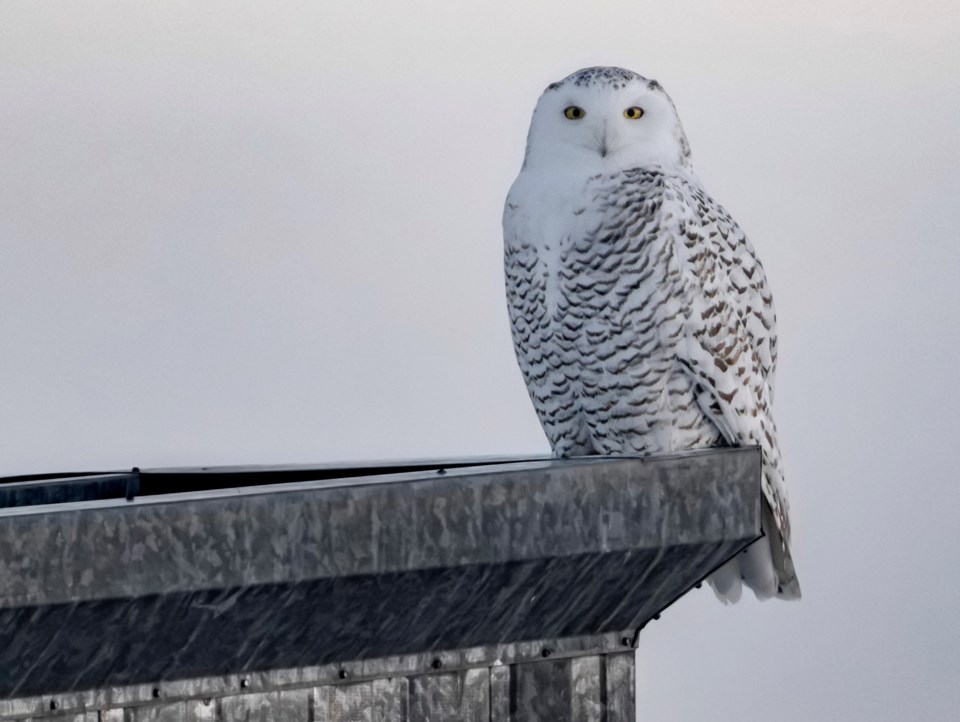It's hard to think of a bird that captivates people the way the snowy owl does.
With its unmistakable white plumage and aura of mystery, this bird of prey is beloved worldwide. From its status as the official bird of Quebec to its portrayal of Harry Potter's pet owl Hedwig in the iconic franchise, there's just something about the snowy owl that appeals to the masses.
Outside of the wizarding world, the snowy owl is a fantastic beast in its own right.
Every year, snowy owls in North America embark on a trip spanning hundreds, if not thousands, of kilometres, making their way from the Arctic tundra to southern Canada and the U.S. to take advantage of warmer temperatures and an abundance of food.
Not all snowy owls migrate, and not all end up as far south as others, but more than enough end up in Alberta for the province to become a wildlife photographer's paradise every winter.
Where can I find one?
Snowy owl migration can be unpredictable given their wide range of destinations, but there are some consistent patterns here in Alberta.
Luckily for wildlife enthusiasts in and around Calgary, the best spots for finding snowy owls in the province are all within an hour's drive of the city.
Terry Korolyk, a longtime birder, has spent decades watching snowy owls and helping fellow birdwatchers find them in their natural habitat. From 1994 to 2022, he ran a birdwatching tour called the Snowy Owl Prowl, a joint venture of Nature Calgary and the City of Calgary.
According to Korolyk, the best place to head out in search of snowy owls this year would be Beiseker, a small village about 70 kilometres northeast of Calgary.
"If you wanted to see one today, I would go out to Beiseker and check the roads east of town there, and you should probably find one or two," he said.
His observations are based on data collected by birders and shared on eBird, a birdwatching database that compiles information on bird sightings worldwide through citizen science.
An in-depth map of snowy owl sightings reported by birders is available on the eBird website.
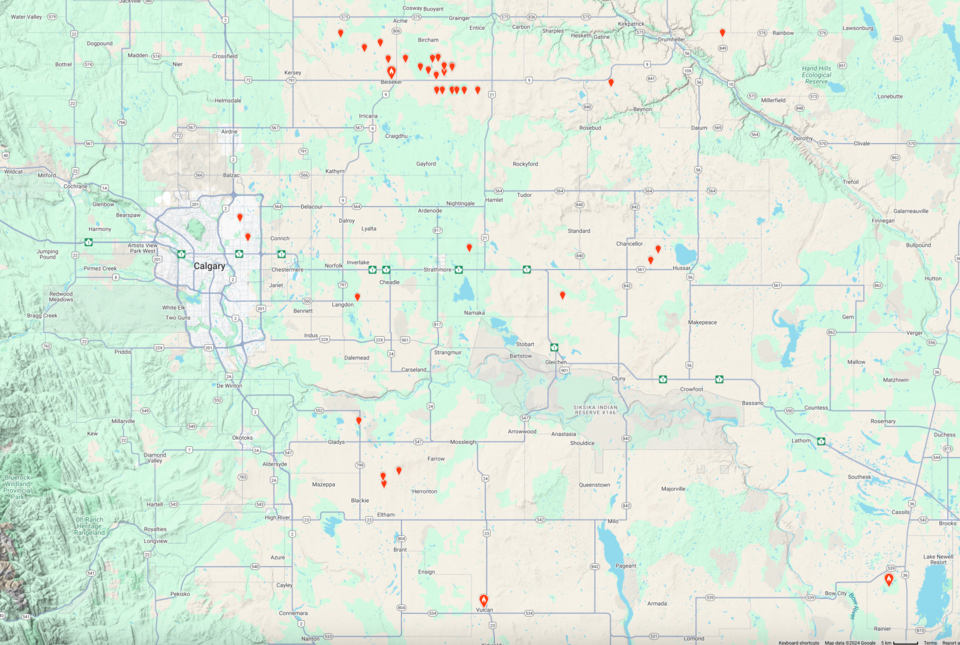
This year's trends indicate that the largest concentration of snowy owl sightings in southern Alberta has been around Beiseker, particularly along Township Road 280 to the east of the village.
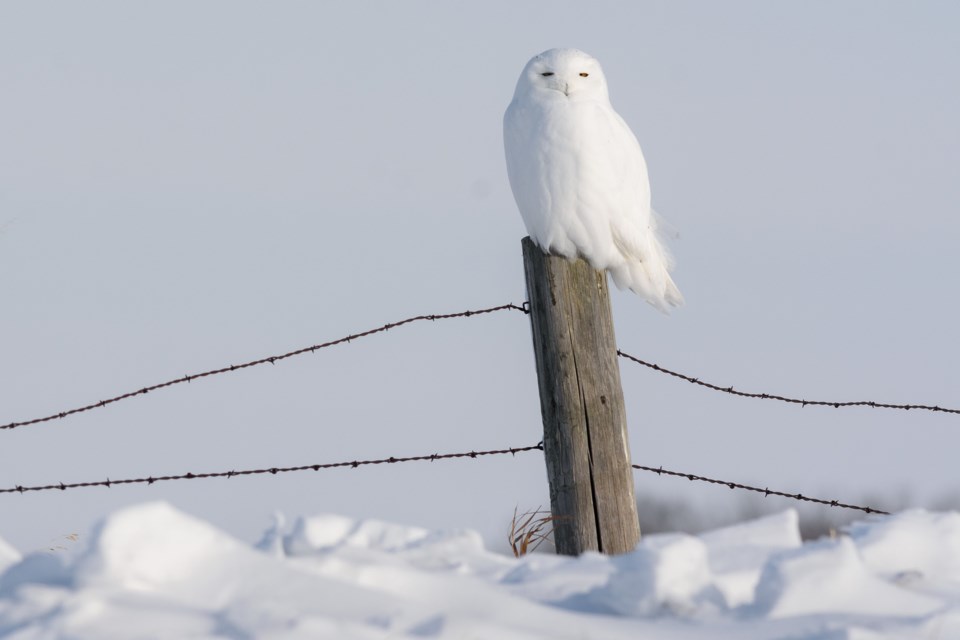
Korolyk's long-running Snowy Owl Prowl tours focused on the area east of Calgary, in particular the rural roads between Strathmore and Irricana. The fields of Wheatland County and Kneehill County are ideal hunting grounds for these birds, filled with vast expanses of empty land and tall structures for the birds to perch on while they look for prey.
South of Calgary, Foothills County and Vulcan County are productive places to search for snowy owls, particularly the areas around Blackie and Herronton.
Further up north, Grande Prairie and surrounding area have generated consistent snowy owl sightings, while there have also been some scattered reports around Sturgeon County near Edmonton.
It's important to note the majority of owl sightings go unreported. Many wildlife photographers are of the opinion that the locations of animal sightings should not be disclosed publicly for fear of attracting excessive or unwanted attention from other photographers, which could lead to stress for the animals. It's a double-sided coin: many are of the opinion that sharing snowy owl sightings has a more positive outcome, as it assists with the ongoing study of the bird's population trends.
It's up to each individual photographer to decide whether to share the location of an owl sighting.
Strategies for spotting a snowy owl
Getting to a snowy owl hotspot is the easy part. Actually finding one of these elusive birds is exponentially harder.
They typically start making their way down from the Arctic in November, and have even been known to start their migration in late October, explained Korolyk.
"They're on their way back north by March," he said.
Last winter, snowy owl sightings in southern Alberta peaked in February, while the last reported sighting was on March 31, according to eBird.
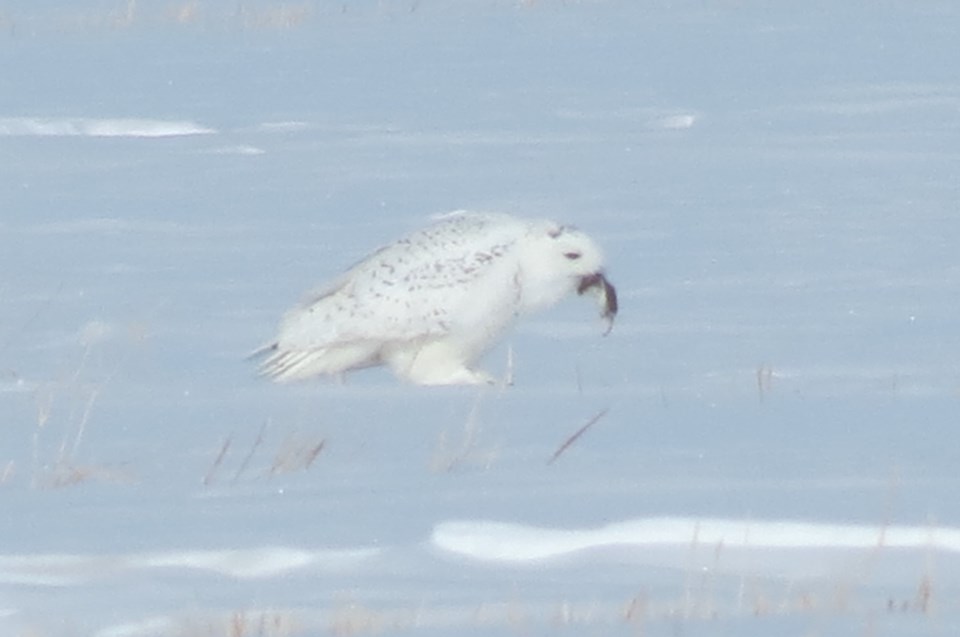
Unlike most of their kin, snowy owls are diurnal, meaning they're most active during the day.
There's no particular time of day that's best for finding snowy owls, according to Korolyk. As daytime hunters, they can be found anytime between dusk and dawn.
Snowy owls spend a great deal of time hunting. According to the Nature Conservatory of Canada, adults require the equivalent of up to 12 mice a day to meet their food requirements.
With that in mind, be on the lookout for large white spots atop fence posts, telephone poles and other man-made structures located in or near large fields. Odds are those large white spots are snowy owls on the lookout for prey.
With their white plumage, they effortlessly blend in with their snowy surroundings, and while they're the largest owls in North America when it comes to weight, they can be hard for even the most seasoned expert to detect with the naked eye. Though they stand at up to half a metre tall, their large stature doesn't make them any easier to spot in most cases.
When it comes to maximizing the odds of finding a snowy owl, weather conditions are one of the most important factors.
Going out on a sunny day is best: the sunlight may encourage snowy owls to perch while basking in the sun's warmth, making it easier to spot them.
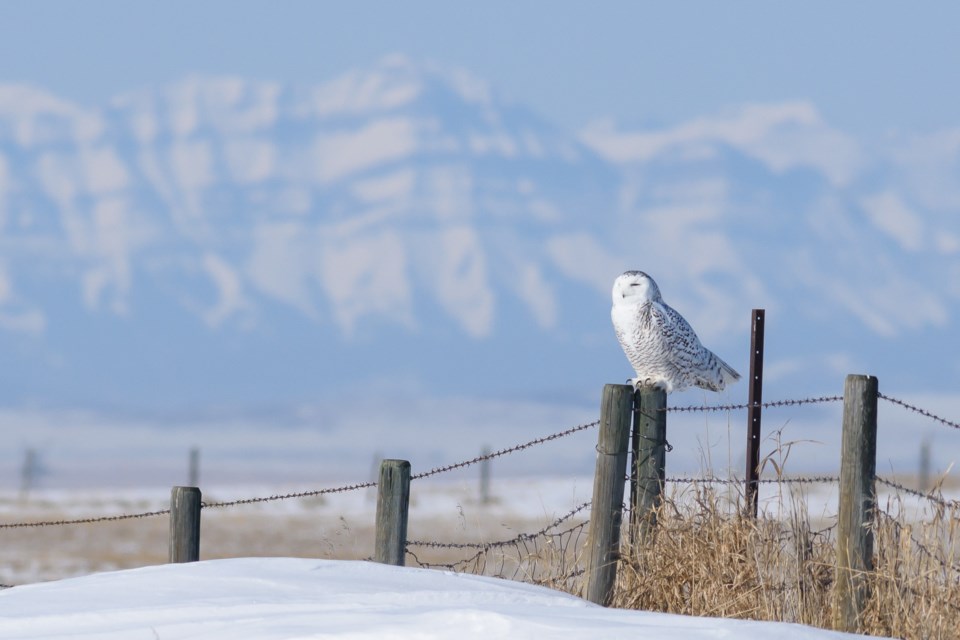
Meanwhile, if it's too windy, snowy owls are more likely to hunker down for cover, making it much harder to spot them, especially when they're in the snow.
Spotting a snowy owl in motion is not an easy task. Unlike many other birds of prey, snowy owls tend to fly incredibly low, keeping close to the ground as they scan for rodents and other small prey.
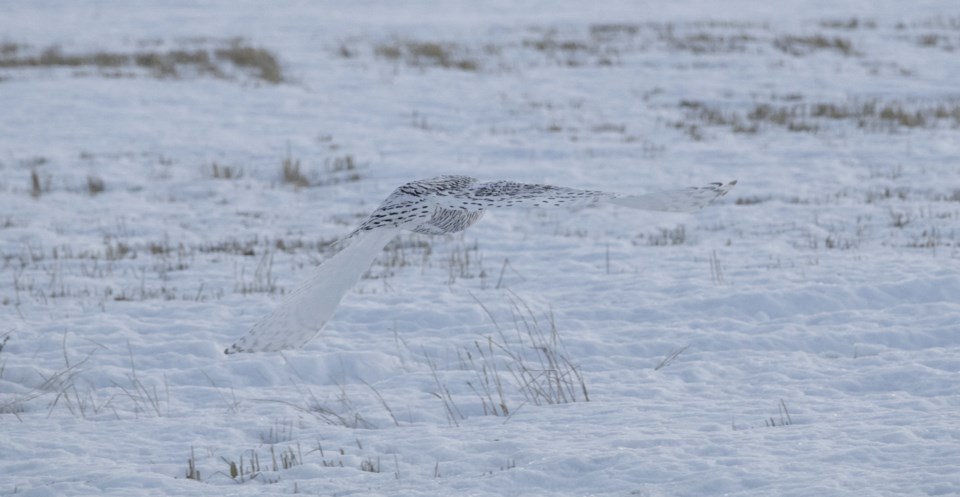
Spotting female snowy owl is marginally easier, as they're covered in dark markings and are noticeably larger than males, which are predominantly white.

Keeping these tips in mind is beneficial, but as with any wild animal, there's no guarantee of finding a snowy owl, let alone getting a good photo of one.
In fact, according to reports, there has been a significant downward trend in snowy owl sightings.
Are snowy owls endangered?
Thankfully, snowy owls aren't listed as an endangered species — yet.
The International Union for Conservation of Nature Red List of Threatened Species lists the bird's global population as vulnerable, only one step away from endangered.
"We do still get lots of reports on them, but it's not known really if numbers are diminishing or where where the current status of the bird as a winter visitor is currently," said Korolyk.
The State of Canada's Birds, a report published through a partnership between Birds Canada and Environment and Climate Change Canada, indicates that snowy owls have experienced a "large decrease" in population trend, while their population is "below goal range."
According to the report, it's estimated there are approximately 15,000 snowy owls throughout North America, over half of the global population estimate of 29,000, with over half of those birds breeding in Canada and nearly all of the rest migrating to or through Canada.
Primarily based on data gathered through citizen science initiatives such as the Christmas Bird Count, the report indicates there has been an estimated loss of 56 per cent of the North American snowy owl population since 1970.
Factors behind the population decline are uncertain but may include changes in the availability of food, potentially due to climate change: snowy owl activity and breeding rates directly depend on the availability of prey in the Arctic, lemmings in particular. Lemming populations, which fluctuate significantly from year to year, heavily influence snowy owl populations. When lemming populations decline, their scarcity leads to snowy owls laying fewer eggs or even not nesting at all, which correlates to fewer birds overall and noticeably lower migration numbers.
In addition, snowy owls in Canada suffer from high mortality rates stemming from collisions with vehicles.
It's this reason in particular that makes it incredibly important to keep the safety of snowy owls in mind and practice ethical wildlife photography.
Ethical wildlife photography
"We must remember that these birds have come a long way and they have to eat to survive, so we don't want to disturb them as much as possible from their daily routine of finding food," said Korolyk.
Spotting a snowy owl in the distance can be thrilling, but it's important to maintain that distance. Don't get too close to the owl: this can cause unimaginable stress to the animal and force it to fly away.
If the owl flies away, chasing it will likely only make it fly further away, in turn inflicting more stress on the animal and making it expend more energy unnecessarily. It's a vicious cycle, one that's likely compounded by the large number of photographers and onlookers an owl ends up encountering.
Baiting, or using food to lure wild animals to get them closer or take action shots of them in motion, is a controversial practice among wildlife photographers. Many denounce it as unnatural and unethical, while others liken it to attracting birds at home with a bird feeder. One should consider the harms of baiting when it comes to owls in particular: by getting these relentless hunters habituated to humans, they're more likely to approach vehicles without their natural inhibitions, which may lead to fatal collisions.
"When you do find one, just try to be sensitive towards the birds and appreciate why they're here and try to cause them as little disturbance as possible," said Korolyk.
Snowy owl conservation is incredibly important as these birds play a critical role in ecosystems around the world. As apex predators, they help to regulate the populations of small animals, with the Cornell Lab of Ornithology stating that one snowy owl can consume over 1,600 rodents in one year. The snowy owl's rodent-heavy diet is a major boost for humans as well, as its daily routine of flying through fields and eating rodents lowers crop damage and the potential spread of disease.
The appeal of these majestic birds is undeniable for too many reasons to count. From Western Canada to as far as Siberia, snowy owls are considered a gift to behold.
In light of ongoing threats to their population both globally and in Canada, it's important now more than ever to treat these majestic animals with the respect and compassion that they need in order to survive during these trying times.

